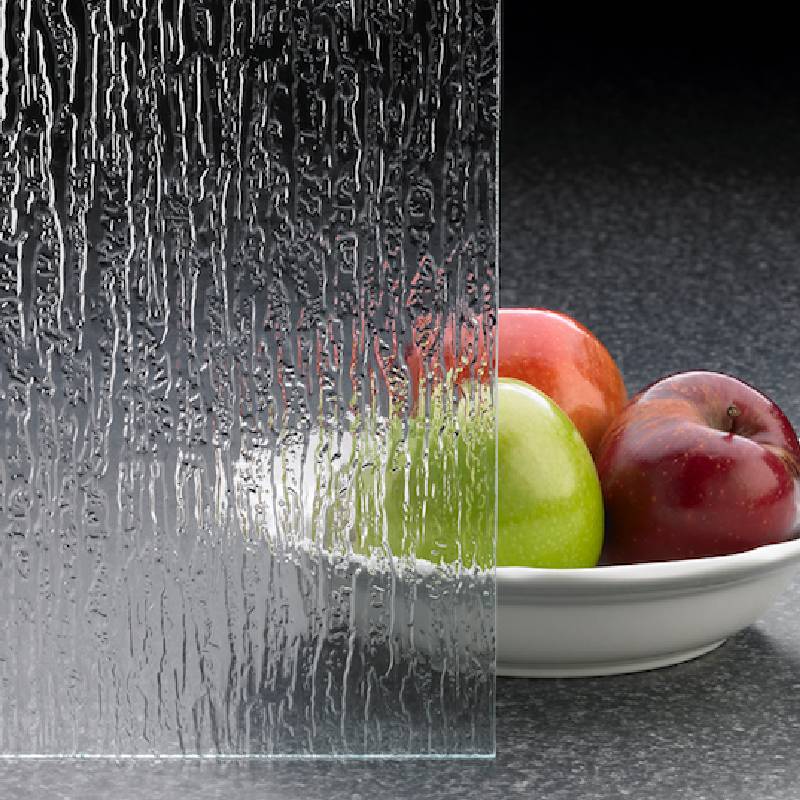The float glass method, also known as the float glass process, is a revolutionary technique for manufacturing flat glass that has transformed the glass industry since its inception in the mid-20th century. This method is characterized by its simplicity, efficiency, and the superior quality of the glass produced. In this article, we will explore the fundamental principles of the float glass process, its advantages, applications, and its impact on modern glass production.
The float glass method involves melting raw materials, primarily silica sand, soda ash, and limestone, to create molten glass. This molten glass is then poured onto a bed of molten tin. The reason for using tin is its ability to provide a perfectly flat surface due to its fluid properties and higher density than glass. As the glass floats on the tin, it spreads out evenly and forms a continuous sheet. The thickness of the glass can be controlled by adjusting the speed at which it is drawn away and cooled, resulting in products that can range from just a few millimeters to several centimeters thick.
One of the most significant advantages of the float glass method is the high quality of the glass produced. The surface of the glass is smooth and flawless, free from imperfections that can affect optical clarity and strength. This quality is particularly important for applications in architecture, automotive, and electronics, where transparency and aesthetics are critical. Moreover, because the glass is formed in a continuous process, it allows for the production of large sizes without compromising quality, which is a substantial advantage over traditional glass manufacturing methods.
The float glass process is also more energy-efficient compared to older methods. While traditional glass-making often required multiple heating and cooling cycles, the float method achieves the desired results in a single continuous operation. This efficiency reduces overall energy consumption and production costs, making it an environmentally friendly option. Additionally, the reduction in waste material is a further benefit, as any excess glass can be recycled back into the production cycle, promoting sustainability.
float glass method
The applications of float glass are vast and varied. In architecture, it is used for windows, glass walls, and facades, offering both aesthetic value and functional properties such as UV protection and thermal insulation. In the automotive industry, float glass is utilized for windshields and side windows, where safety and clarity are paramount. Furthermore, the electronics industry relies on float glass for screens and other components that require high transparency and durability.
The invigorating impact of the float glass method extends beyond just production; it has influenced design and technology in countless ways. Architects and designers have capitalized on the availability of large, flawless glass sheets to create innovative structures that were once thought impossible. The transparency and lightness of glass also play a significant role in contemporary design philosophies that emphasize openness and connectivity between indoor and outdoor spaces.
In conclusion, the float glass method represents a major advancement in glass manufacturing, offering unparalleled quality, efficiency, and versatility. As technology continues to evolve, the potential applications for float glass are likely to grow even further, solidifying its role in shaping the future of design and construction across various industries. The legacy of the float glass process will undoubtedly continue to influence how we interact with our built environments for years to come.
 Afrikaans
Afrikaans  Albanian
Albanian  Amharic
Amharic  Arabic
Arabic  Armenian
Armenian  Azerbaijani
Azerbaijani  Basque
Basque  Belarusian
Belarusian  Bengali
Bengali  Bosnian
Bosnian  Bulgarian
Bulgarian  Catalan
Catalan  Cebuano
Cebuano  Corsican
Corsican  Croatian
Croatian  Czech
Czech  Danish
Danish  Dutch
Dutch  English
English  Esperanto
Esperanto  Estonian
Estonian  Finnish
Finnish  French
French  Frisian
Frisian  Galician
Galician  Georgian
Georgian  German
German  Greek
Greek  Gujarati
Gujarati  Haitian Creole
Haitian Creole  hausa
hausa  hawaiian
hawaiian  Hebrew
Hebrew  Hindi
Hindi  Miao
Miao  Hungarian
Hungarian  Icelandic
Icelandic  igbo
igbo  Indonesian
Indonesian  irish
irish  Italian
Italian  Japanese
Japanese  Javanese
Javanese  Kannada
Kannada  kazakh
kazakh  Khmer
Khmer  Rwandese
Rwandese  Korean
Korean  Kurdish
Kurdish  Kyrgyz
Kyrgyz  Lao
Lao  Latin
Latin  Latvian
Latvian  Lithuanian
Lithuanian  Luxembourgish
Luxembourgish  Macedonian
Macedonian  Malgashi
Malgashi  Malay
Malay  Malayalam
Malayalam  Maltese
Maltese  Maori
Maori  Marathi
Marathi  Mongolian
Mongolian  Myanmar
Myanmar  Nepali
Nepali  Norwegian
Norwegian  Norwegian
Norwegian  Occitan
Occitan  Pashto
Pashto  Persian
Persian  Polish
Polish  Portuguese
Portuguese  Punjabi
Punjabi  Romanian
Romanian  Russian
Russian  Samoan
Samoan  Scottish Gaelic
Scottish Gaelic  Serbian
Serbian  Sesotho
Sesotho  Shona
Shona  Sindhi
Sindhi  Sinhala
Sinhala  Slovak
Slovak  Slovenian
Slovenian  Somali
Somali  Spanish
Spanish  Sundanese
Sundanese  Swahili
Swahili  Swedish
Swedish  Tagalog
Tagalog  Tajik
Tajik  Tamil
Tamil  Tatar
Tatar  Telugu
Telugu  Thai
Thai  Turkish
Turkish  Turkmen
Turkmen  Ukrainian
Ukrainian  Urdu
Urdu  Uighur
Uighur  Uzbek
Uzbek  Vietnamese
Vietnamese  Welsh
Welsh  Bantu
Bantu  Yiddish
Yiddish  Yoruba
Yoruba  Zulu
Zulu 

